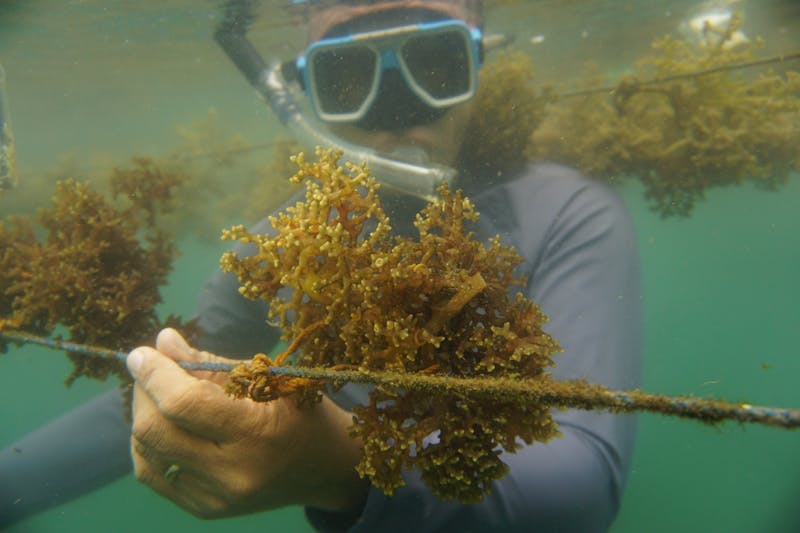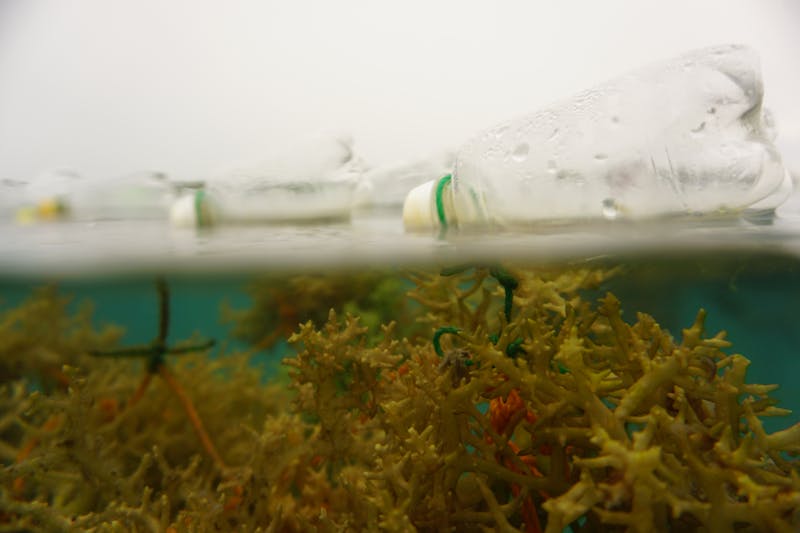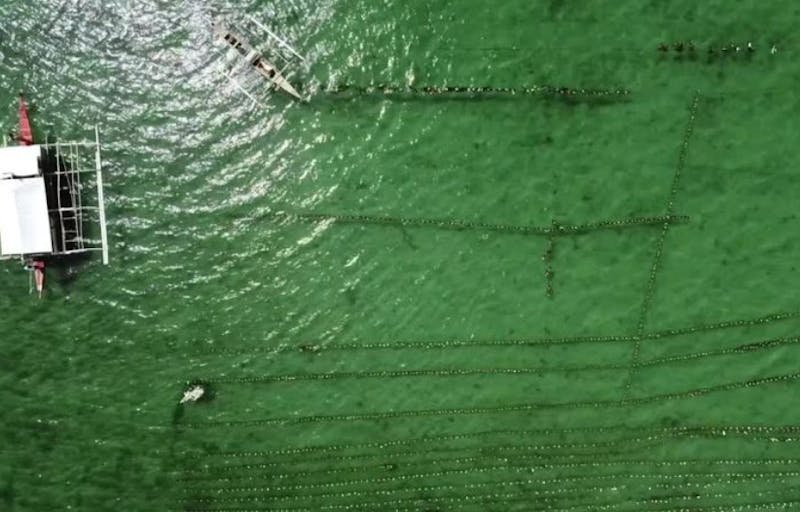Editor’s note: Around the world, innovative businesses are helping to solve some of the biggest environmental challenges of our time. Conservation International’s investment fund, CI Ventures, provides funding and support for early-stage companies that arebenefiting people and nature. In this occasional series, startup founders join CI Ventures investment experts to share their origin stories.
In the past decade, seaweed production has boomed as researchers and investors eye its potential: It’s been heralded as a sustainable superfood, a biodegradable replacement for plastic packaging and a feed supplement to cut cows’ methane emissions.
Yet alongside seaweed’s promise, there are pitfalls. The supply chain is riddled with unsustainable and exploitative practices that can degrade the environment and hurt farmers’ livelihoods.
CI Ventures investee Coast 4C, a seaweed trading company in the Philippines, wants to change that by shifting farmers to practices that increase the supply of high quality, sustainable seaweed — and ensuring they are fairly compensated for their work.
Conservation News sat down with Coast 4C CEO Nick Hill and Gracie White, who leads CI Ventures’ ocean investments, to learn how they are building a more transparent and environmentally-sound seaweed supply chain.
Seaweed growing on a Coast 4C farm in the Philippines.
Let’s start with what sparked your interest in seaweed and Coast 4C?
Gracie White: I worked in seaweed aquaculture for years — first for a kelp farm, then with a type of seaweed called Asparagopsis, which, when used as cow feed, has been shown to reduce the amount of methane they produce. Seaweed farming has enormous potential to benefit people and ecosystems — from building resilience to climate change to improving livelihoods — but there are still challenges to farming it in an environmentally and socially responsible way.
Asia produces 97 percent of the world’s seaweed, predominantly in China, Indonesia and the Philippines — and almost all is grown by small family farms. The rest of the world is just beginning to catch on. While seaweed is in almost everything, it’s not well regulated and there's no set standards for how tropical seaweeds are grown and sold. Just like large-scale agriculture on land, seaweed farming can cause environmental issues — including habitat destruction and plastic pollution.
Then, when it comes to selling their product, seaweed farmers in Southeast Asia often have access to only one local trader, which leaves them vulnerable to pricing monopolies. To reach the international market, which could provide a higher price, farmers must be able to show quality and consistency in their product — but currently, there are very few support systems in place to help them do so.
How is Coast 4C working to change this?
Nick Hill: One of the biggest issues in the seaweed market is that people don’t know where their seaweed comes from because the supply chain is long and complicated. We connect small-scale farmers directly to global brands that value environmental and social responsibility. Currently, we’re working with 500 farmers in the Philippines — 85 percent of whom are women. Our farmers must follow environmental and social standards, for example, by eliminating single-use plastics — like the rope seaweed grows on — that are responsible for about half of all plastic pollution in coastal communities. In return, we guarantee farmers a premium price for their seaweed, which increases their incomes and reduces their dependence on fishing.
This matters because more than 95 percent of tropical seaweed is grown in the western Pacific’s Coral Triangle, a biodiversity hotspot that spans 6 million square kilometers (2.3 million square miles) and is known as the “Amazon of the Seas” because of the wildlife it supports. We’re helping communities set up marine protected areas that integrate seaweed farms within them. This creates a safe and healthy place for seaweed farming, alongside helping to restore fish populations and mangrove and coral habitat. It also incentivizes community enforcement of the protected areas because they are economically dependent on the seaweed.
Coast 4C repurposes plastic bottles destined for landfills or the ocean as floats on seaweed farms.
There are also social issues. Many seaweed farmers struggle to make a livable wage.
NH: Yes, and when farmers can’t make a living wage by growing seaweed, they often turn to fishing — at times using extremely destructive practices like dynamite, poison or bottom trawling, which can destroy coral reefs and entangle or maim marine mammals, such as endangered sea turtles. By raising the value of seaweed, we’re supporting farmers’ livelihoods and helping to protect the environment.
We can also help boost production. Seaweed production on farms is low in many places because of outdated farming practices. This can be exacerbated by climate change and a lack of genetic diversity in seaweed, which makes it vulnerable to disease. Coast 4C is combining farmers’ knowledge of their ecosystems with the latest scientific advances to improve growing practices and develop new, more climate resilient strains of seaweed. And we help farmers with access to capital to implement these practices.
In December 2021, super typhoon Odette struck the Philippines. How have the farmers and Coast 4C recovered?
GW: The typhoon struck just as we were finalizing our investment deal. It destroyed 90 percent of Coast 4C’s infrastructure, and all the seaweed farms they were working with. Knowing the company — and the farmers they work with — would need our investment more than ever, we were able to restructure the deal to give them time to recover, rebuild and pay back the loan over a longer period.
NH: CI Ventures stuck with us, allowing us to provide financial aid packages that helped farmers get back on their feet. After the typhoon, there was nothing left — and for three weeks, all communications were cut off. That experience has led us to think about how we prepare for future typhoons — from developing climate resilient strains of seaweed, to building a network of typhoon resilient seaweed nurseries and disaster risk reduction plans that allows us to protect some of the crop, so when the next storm hits, we have something to rebuild from.
Among so many challenges, what makes you hopeful about this work?
NH: After losing so much to Odette, much of our energy has gone toward helping farmers restore their crops. Now, we’re focused on growth. Within the next two years, we’re planning to expand our work to Indonesia. There is so much interest and excitement around seaweed right now — new markets and technologies are shaping the way we use this ancient plant. But the bottleneck is a supply of quality, traceable seaweed that grows in harmony with nature. That’s where we can help.
Further reading
- Meet the South African startup putting cattle to work for conservation
- Meet the startup using magnets to keep sharks at bay
Mary Kate McCoy is a staff writer at Conservation International. Want to read more stories like this? Sign up for email updates. Also, please consider supporting our critical work.


